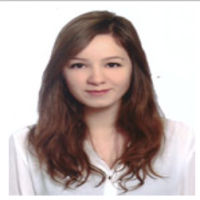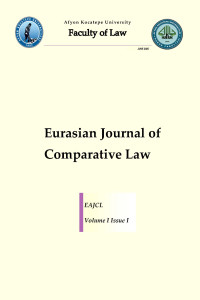Research Article
Case Reports
Biographies
Issue Editorial Board

 0000-0001-8731-4181
0000-0001-8731-4181

Aim & Scope
If one perceives the world through the glasses of his own legal tradition, he may be falsified on the content and the context of notions belonging to foreign laws. Therefore, the Eurasian Journal of Comparative Law (EAJCL), which will be published by the Private Law Department members of Afyon Kocatepe Faculty of Law, aims to cultivate to the understanding of legal notions in different legal systems, create awareness of comparative law among legal scholars in European and Eurasian Region, neighbouring countries and especially in Turkey. EAJCL’s object involves demonstration of Comparative Law as not only a field of comparison of particular positive law concepts belonging to different foreign laws, but also it’s profound methodological background. At the crossroads of a diversity of legal traditions, EAJCL targets to increase legal interactions between the countries of the European and Eurasian Region and contribute to the development of comparative law theory.
EAJCL is an open-access international, peer-reviewed journal that will be published twice a year. The language of publication is English. The journal accepts articles in the field of comparative law, especially on the legal systems of the European and Eurasian Region, specific legal problems of the European and Eurasian Region countries and the general theory of comparative law. EAJCL publishes original scientific studies through research articles, short reviews, case reviews, book reviews and translations. The conformity of the original papers subject to publication with the academic criteria is evaluated by two independent reviewers in a two-way blind review system.
Author Guidelines
EAJCL is an international, peer-reviewed journal that will be published twice a year. The language of publication is English. The journal accepts articles on comparative law, especially articles on the legal systems and specific legal problems of the European and Eurasian Region countries and the general theory of comparative law.
The journal aims to contribute to the development of comparative law.
Articles to be sent to the journal for publication will first be evaluated in terms of acceptability conditions. However, at the same time, the articles will be subject to serious editorial scrutiny. Articles submitted to the journal will be subject to an intihal.net query. Publications with a similarity rate of more than 20% will not be accepted.
The next stage is the referee evaluation phase, and EAJCL has adopted the double-blind referee system.
When uploading your article to the system, you must also fill in and sign the copyright agreement and funding and conflict of interest declaration and upload it to the system.
1. The written language of the journal is English. Articles must be sent with an English abstract of at least 100 and at most 150 words, with the article name and max. five keywords added to the beginning of the article.
2. Articles; It must be prepared in “Microsoft Word” program. Main text, 16x24 size, 3 cm margins from the top of the page, 2.5 cm margins from the bottom, right and left sides of the page, 10.5 point "Palatino Linotype" font, footnotes 9 point "Palatino Linotype" character, It should be written with a 5 mm indent in the spacing and paragraphs.
3. Articles; should not be more than 10.000 words, including footnotes but except abstract and bibliography, There is no character (word) limit for translated works.
4. The whole process of article acceptance will be carried out through the Dergipark manuscript System. Authors will upload their works that they want to be published in the journal through the Dergipark system.
5. The first page of the works to be sent must contain the following information about the author(s): Name-surname, title, institution, city/country, e-mail and ORCID ID information.
6. The titles of the submitted articles are appropriate to the text; It should be short and clearly expressed.
7. All references, tables and figures to be used in the works should be arranged using The Chicago Manual of Style. For more information about The Chicago Manual of Style, please visit https://www.chicagomanualofstyle.org/tools_citationguide/citation-guide-1.html
8. On the first line after the headings, paragraph indent is not used, the paragraph is started left-justified. Paragraph indent should be used for subsequent paragraphs.
9. Parts that are not directly related to the subject examined in the work, but require explanation or detailed information, should be added to the work using the footnote method.
10. At the end of the works, there must be a bibliography arranged alphabetically according to the Chicago reference system.
Please find the model manuscript template here.
Ethical Principles and Publication Policy
Falsification: Using data that is not based on research, does not exist in reality or has been altered is considered as data falsification.
Price Policy
No fee is charged to the author or his/her organisation under any name.

